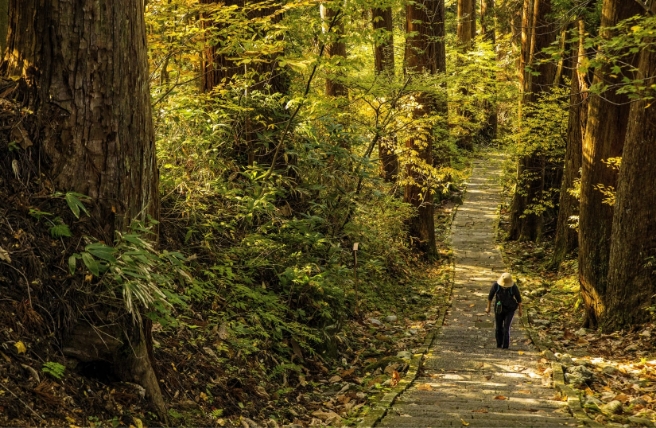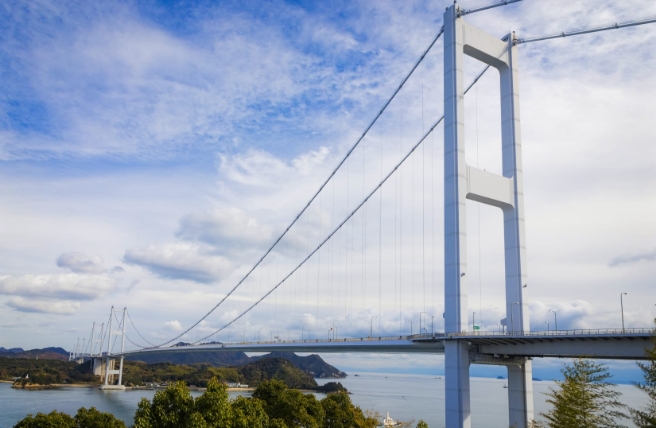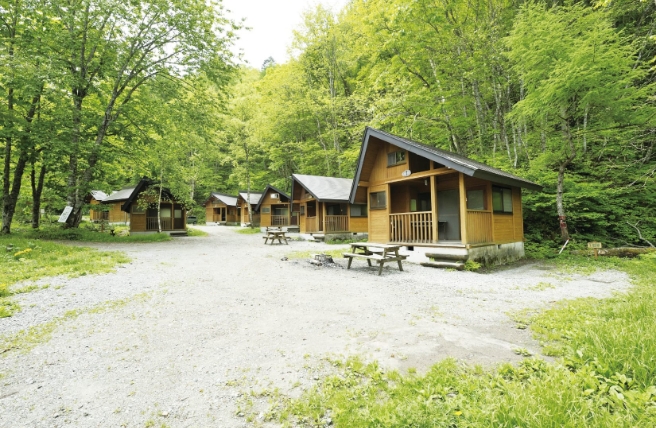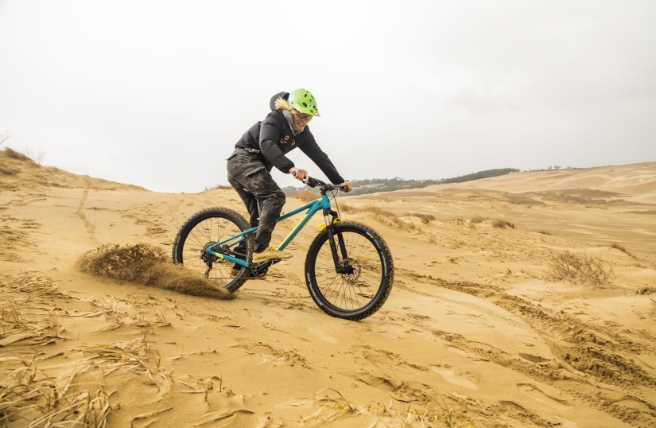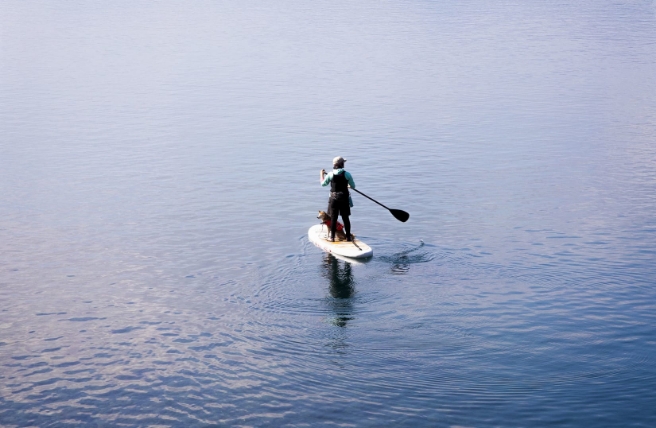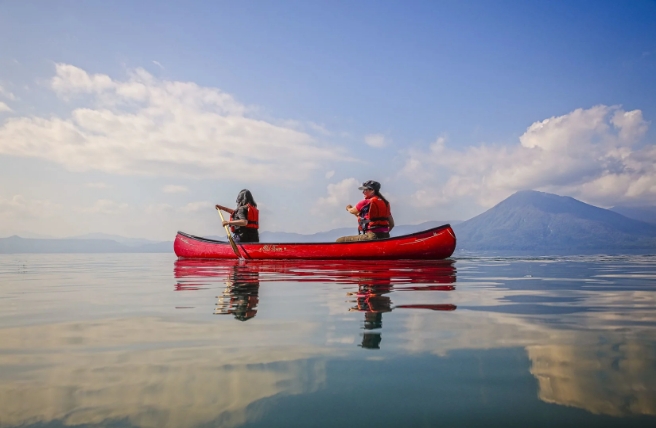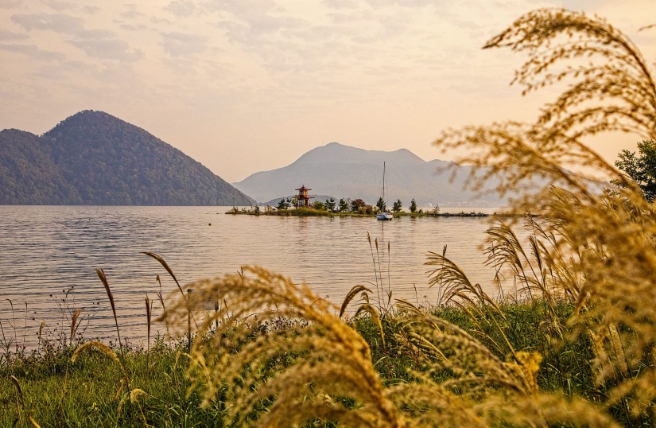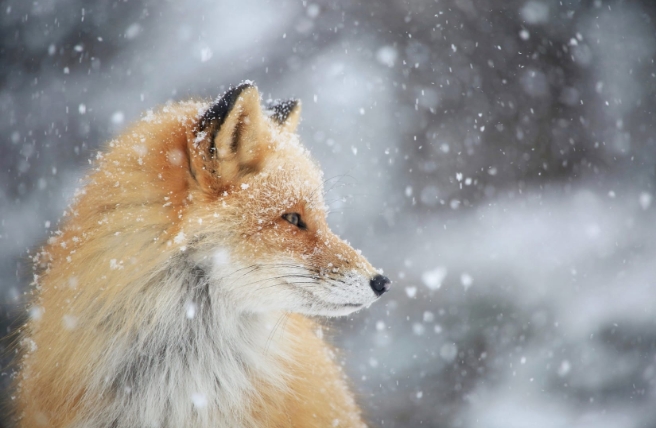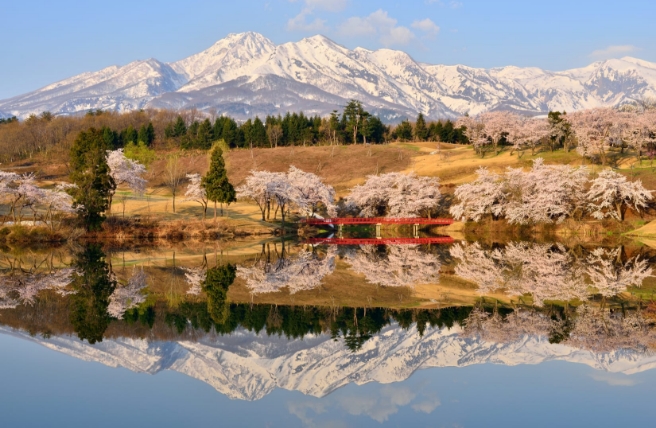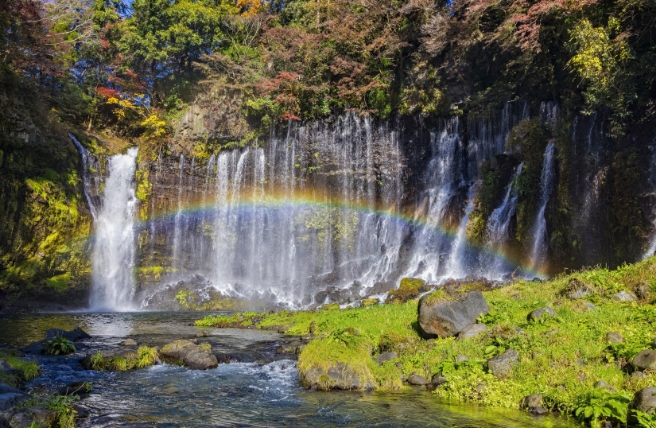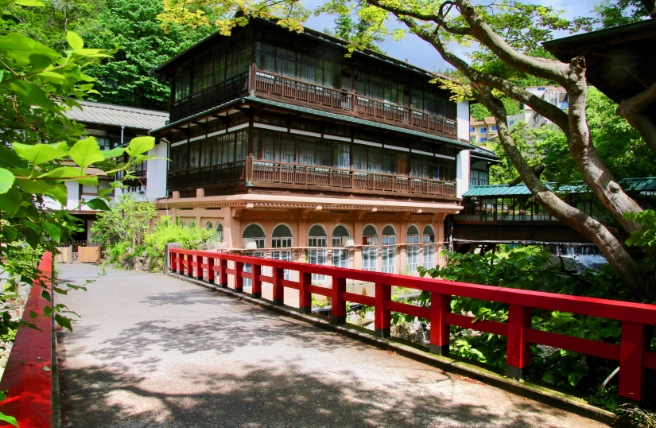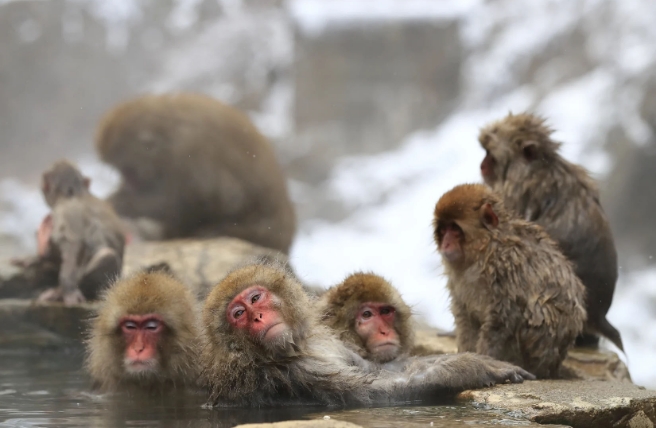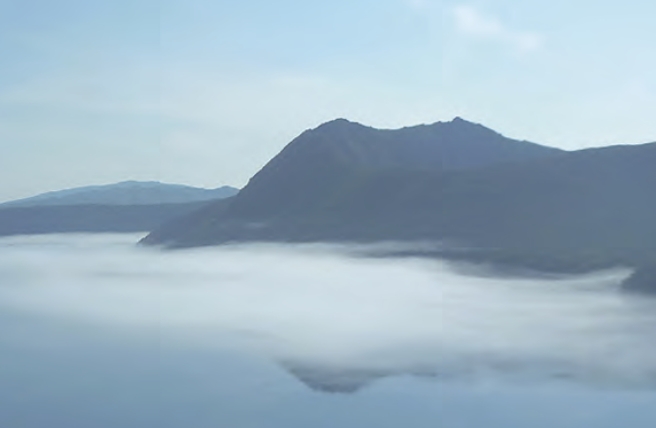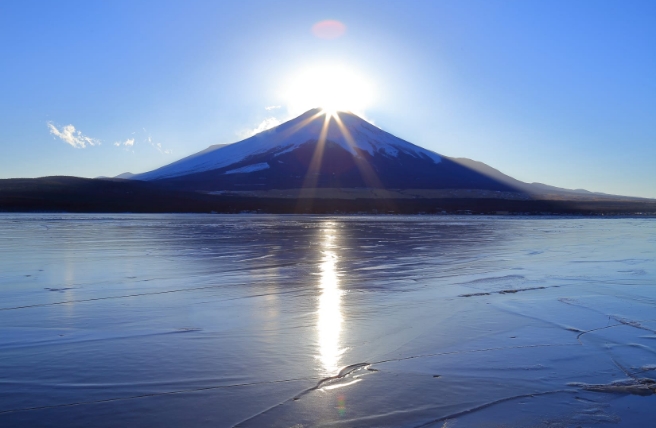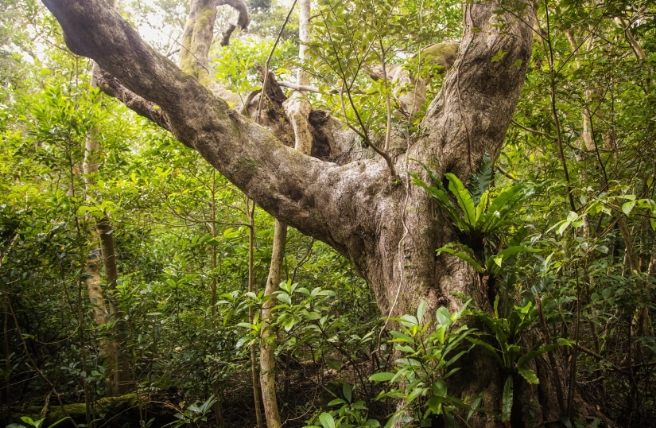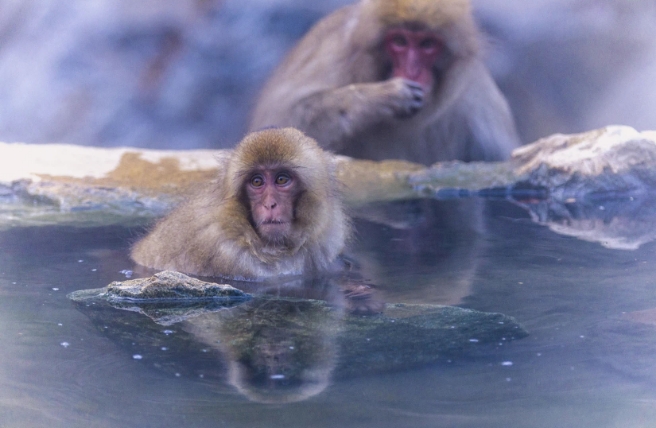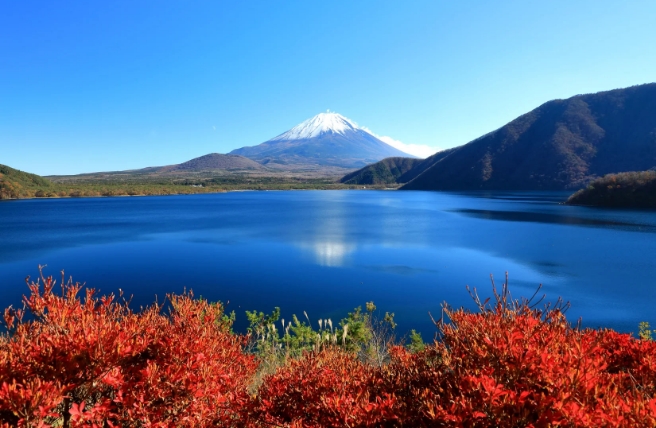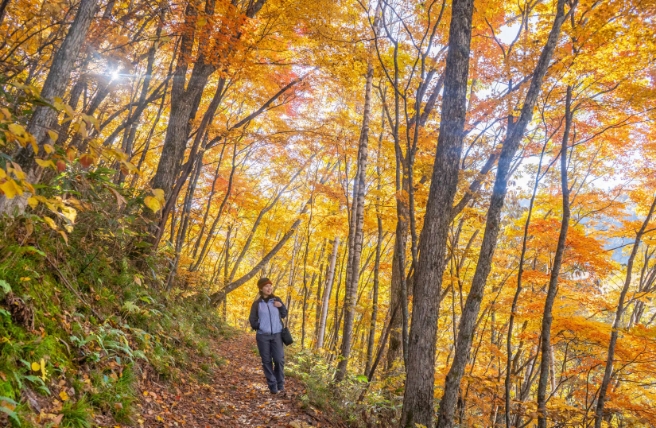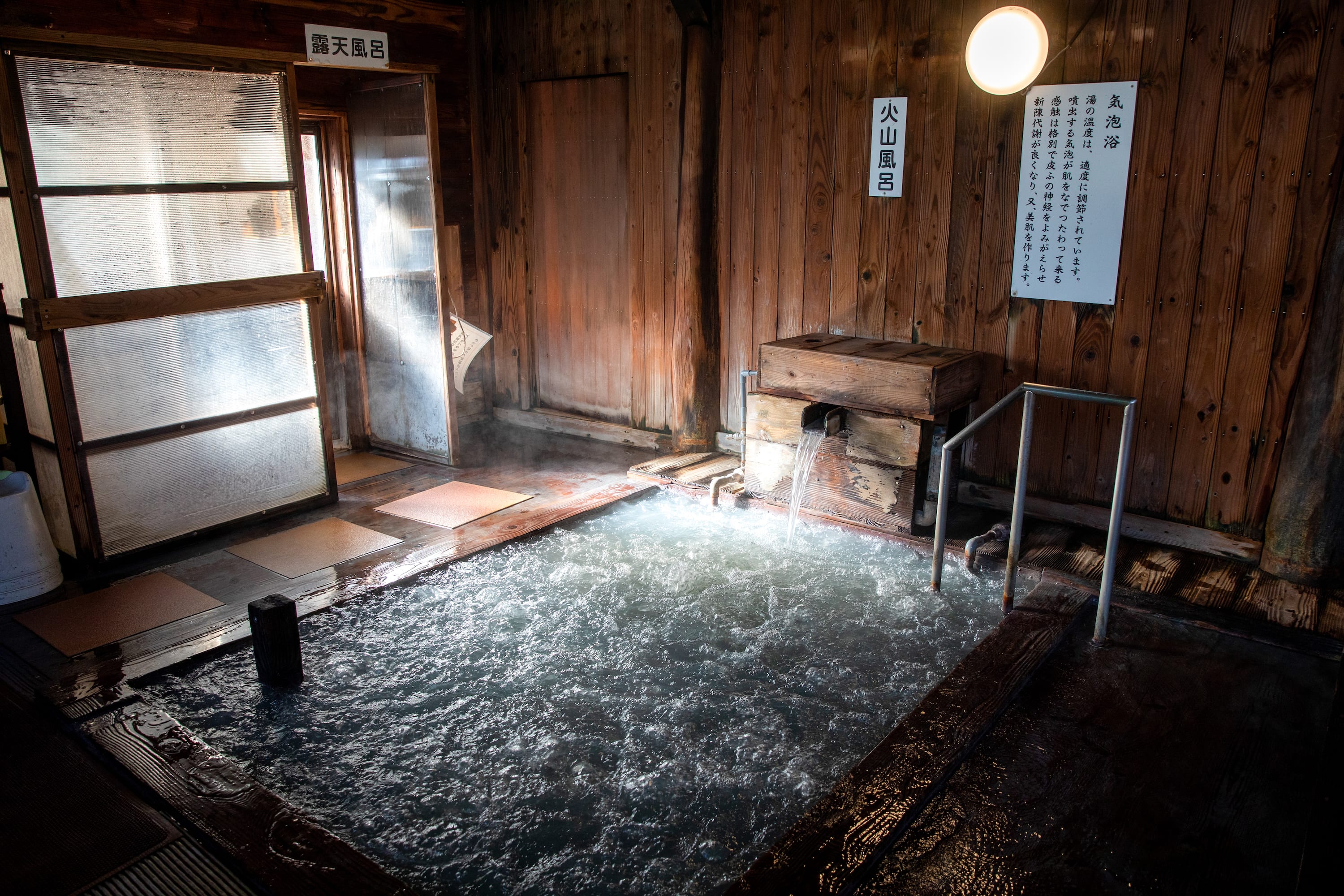
The bubbling waters of Goshougake Onsen
How are hot springs formed?
Most of the world’s volcanoes are created when one vast tectonic plate slides under another. This process of subduction generates pressure and heat, leading to the formation of magma. As magma is lighter than solid rock, it rises and collects in magma chambers. Eventually, some of the magma is ejected as lava through vents and fissures in the Earth's crust. It is subsurface magma that heats groundwater and creates hot springs and other features such as geysers, fumaroles, and mud pits. When groundwater comes into contact with very hot rock that is heated by magma, its temperature rises and its density decreases. In much the same way as magma, steam and hot water rise through fissures and cracks in the ground.
The bubbling mud pools (or bokke) in Akan-Mashu National Park are an example of this process. Geothermal activity brings many benefits including contributing to the biodiversity of Japan’s national parks. In Akan-Mashu National Park, the bokke support warm-climate plant and animal life through the harsh winters of northern Japan.

Sulfur fumaroles on Mount Io (Atosa-Nupuri)
Mineral benefits
Whether in a rustic forest hut or a high-end onsen resort, the defining feature of a hot spring is its water. The water’s mineral profile will affect its color and appearance, what effects it has on the body, and how it is classified. ‘Simple springs’ contain generally higher levels of minerals than non-spring water, without any one mineral being particularly concentrated. These warm, typically clear waters are ideal to soothe tired muscles, boost circulation, or just relax.
Carbonated springs also tend to be clear, with water that feels soft due to the high concentration of sodium bicarbonate. The water is thought to soothe irritated skin.
Carbon dioxide springs, like those in Sujiyu Onsen within Aso-Kuju National Park, are suffused with small bubbles caused by carbonic acid in the water. The combination of this mineral and the high water temperature encourages vasodilation, boosting blood circulation.
The blue color of sodium chloride springs comes from high levels of silica. This type of onsen is popular for silica’s reputed ability to improve the skin’s barrier function, helping prevent dehydration and dryness. The high salt content slows evaporation, keeping the skin warm for a long time after bathing.
Sulfur springs have a high hydrogen sulfide content, which lends them their distinctive eggy odor. The opaque, typically blue or green-tinged waters are thought to soothe skin irritations, as well as lower blood pressure and improve circulation. Awanoyu is a rotenburo (open-air bath) at Shirahone Onsen in Chubusangaku National Park where you can enjoy some of these benefits.
Red and gold waters are characteristic of iron-rich springs, which emerge clear at the source, then change color as the iron in the water oxidizes. Iron hot springs are said to benefit people suffering from anemia, or low iron levels.
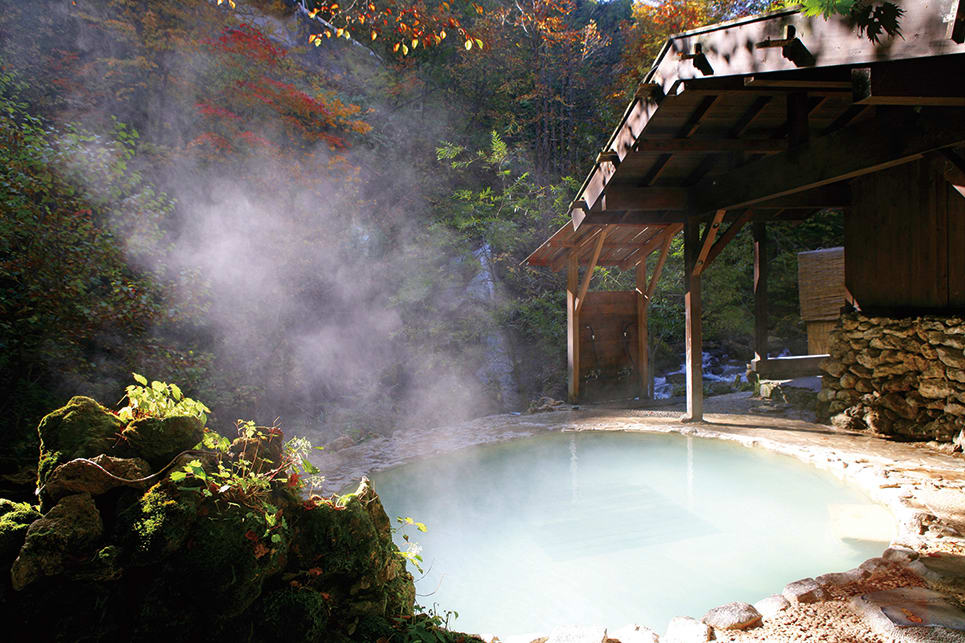
Rotenburo (open-air bath) at Shirahone Onsen, Chubusangaku National Park
On the onsen trail
Japan’s hot springs are often set in areas of natural beauty, and you can experience plenty of activities on your way to a soothing soak.
The mossy, primeval forests of Yakushima (Island) National Park, off the southern tip of Kyushu, are said to have inspired the sacred forests in the Ghibli film Princess Mononoke. Hike up Mount Mocchomudake for sweeping views across the forested island, then soothe your aching muscles with a bath at Onoaida Onsen.
Enjoy scenic drives and hikes through undulating grasslands and jagged mountain ranges in Kyushu’s Aso-Kuju National Park. Further west is Unzen-Amakusa, Japan’s first national park, where you can enjoy Unzen Onsen’s sulfur springs after a guided nature walk.

Driving on the Milk Road at Aso-Kuju National Park
The ancient hot spring town of Kinosaki Onsen in San’inkaigan National Park has seven public bathhouses within easy strolling distance of the train station—all tattoo-friendly. Join a guided tour to explore the town’s charms, from its tree-lined canals to its elegant white Izushiyaki ceramics.
Nikko is one of the easiest national parks to visit from Tokyo, with access to beautiful landscapes in all seasons. The Nasu mountain range has a family-friendly ski resort and several hiking trails which lead to dramatic viewpoints in just an hour or two (with an option to take a ropeway down). In winter, head to Yunishigawa Onsen for the cozy Kamakura Festival, where snow huts are illuminated from within.
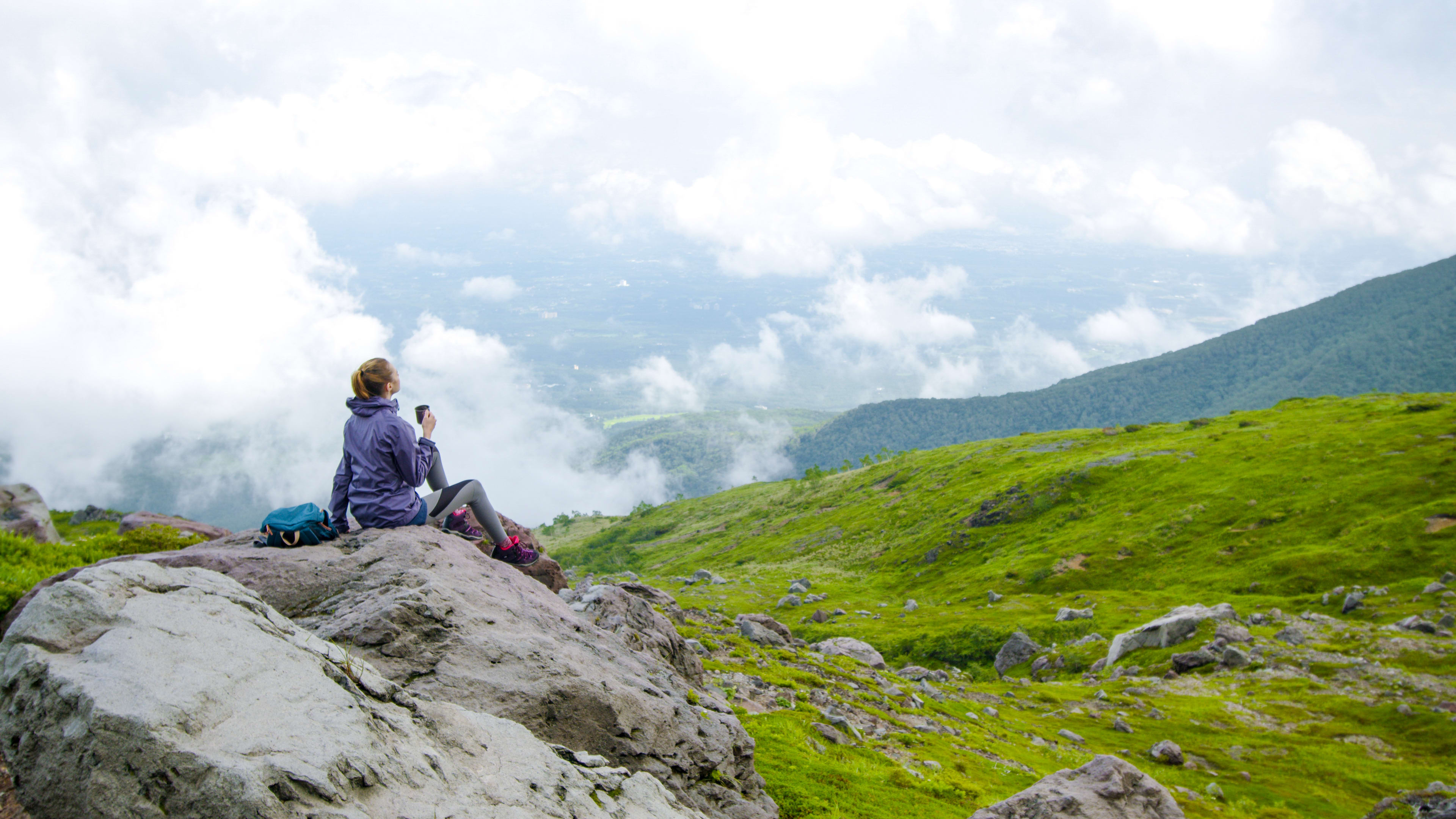
Hiking Nikko National Park's Mount Nasudake
Central Japan’s Myoko-Togakushi renzan National Park has some memorable scenery, including several waterfalls. The springs are picturesque, with iron-rich red water at Seki Onsen and white water at Tsubame Onsen.
You can see the different effects of geothermal heat in Bandai-Asahi National Park’s Tsuchiyu Onsen. Join a tour of a geothermal power station, before enjoying the waters at a ryokan (Japanese-style inn). For something more traditional, learn about the history and culture of Dake Onsen with a yumori, a hot spring expert who protects and maintains the springs.
Kusatsu Onsen, located on the east side of Joshin’etsukogen National Park, has a range of hot spring inns and public baths with acidic waters—containing healing minerals such as sulfur, aluminum sulfate and chloride. To the west of the park is Jigokudani Yaen Koen (Jigokudani Snow Monkey Park)—where you can observe snow monkeys bathe in warm, natural springs.
Near the northern tip of Honshu, Towada-Hachimantai National Park is a diverse area where you can drive between scenic spots, then explore and soak in hot springs. In winter, Nyuto Onsen is particularly beautiful, with several rotenburo where you can watch the snow falling while bathing.
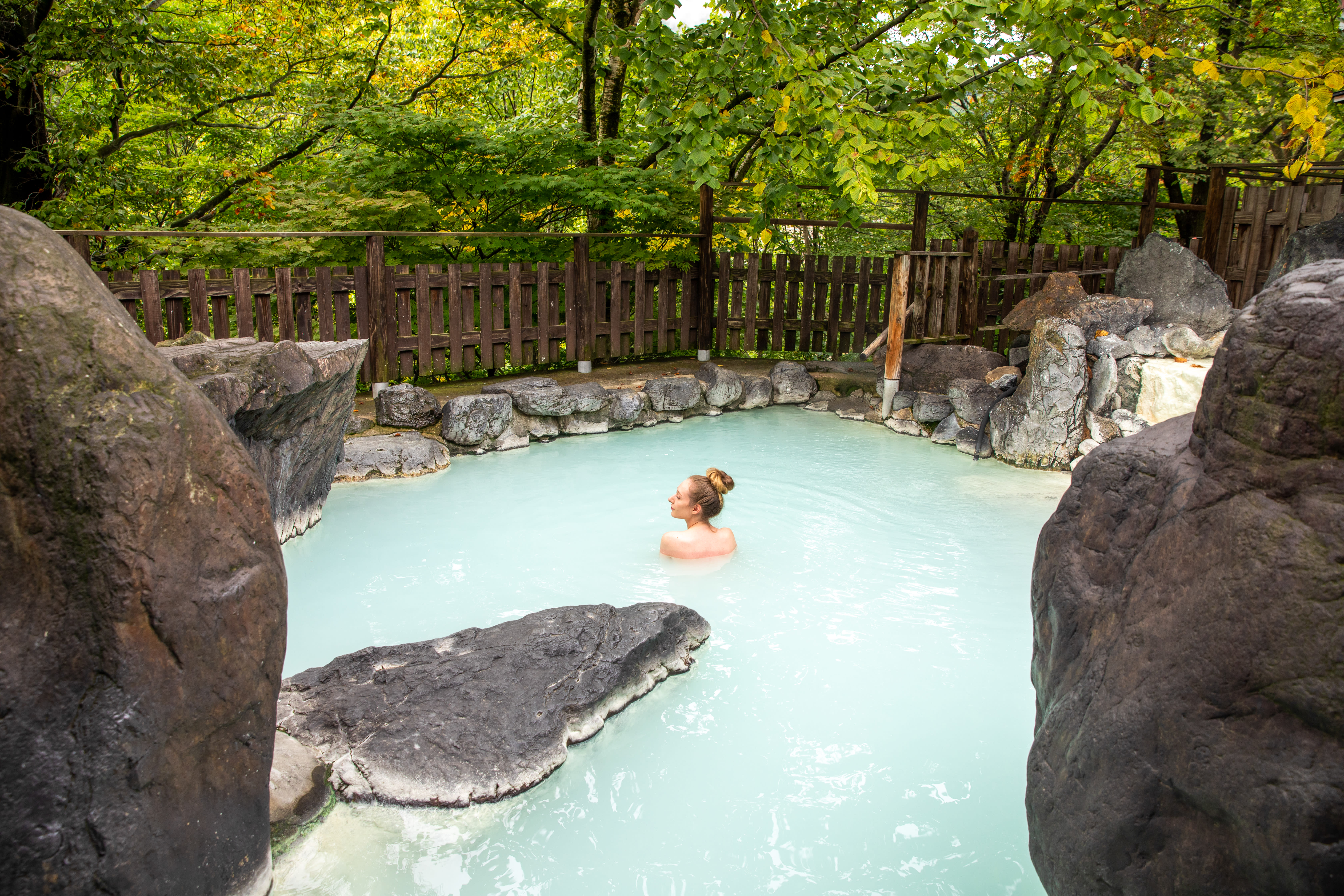
Milky blue waters at Matsukawa Onsen in Towada-Hachimantai National Park
Daisetsuzan National Park in Hokkaido is known for its mountain trails and excellent back-country skiing. Take a guided hike to Ansei Crater and learn about the volcanic mountain range, before snacking on onsen tamago (eggs soft-boiled in the springs).
